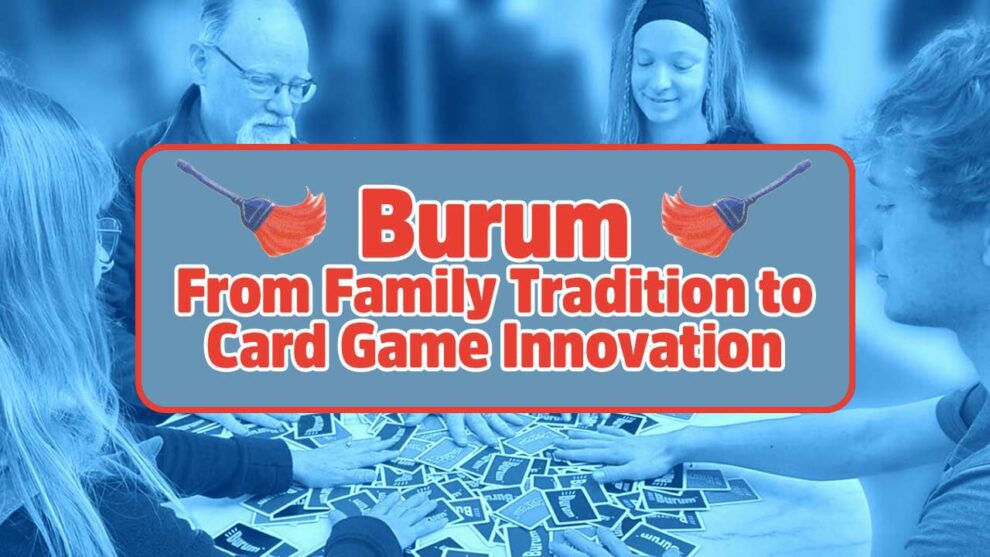The Game Manufacturers Association (GAMA) is a conference unlike any other in the gaming world. It brings together folks from all over the industry, from top-level CEOs to first-time designers. The beauty of the convention is that all attendees are seen as equal. Everyone is approachable, and everyone loves to chat about games—after all, why else would one attend GAMA if not for the love of gaming?
I had the opportunity to attend for the first time this year, and I was blown away by the level of passion and cross-networking everywhere I went. One part of GAMA is the Game Nights, where publishers—both big and small—set up tables to demo their games for industry professionals. Many showcased games are upcoming titles or existing ones looking for a publishing home.
One night, I spotted a table with two women sitting with piles of cards, and hardly anyone giving them more than a passing glance. Their table seemed overshadowed by the big publisher names with flashy banners and marketable IPs. I decided to sit down and see what they had to offer—everyone deserves some foot traffic!
Enter Burum.
I was greeted by two lovely women who introduced me to a simple yet creative card game they had developed with their family. Tricia and Genie, two sisters, had driven seven hours from Iowa just to attend the event for a single night. I played a few hands of Burum, initially unsure of the objective. Though I was easily beaten, I quickly saw the fun in Burum and was told the heartwarming story behind it.
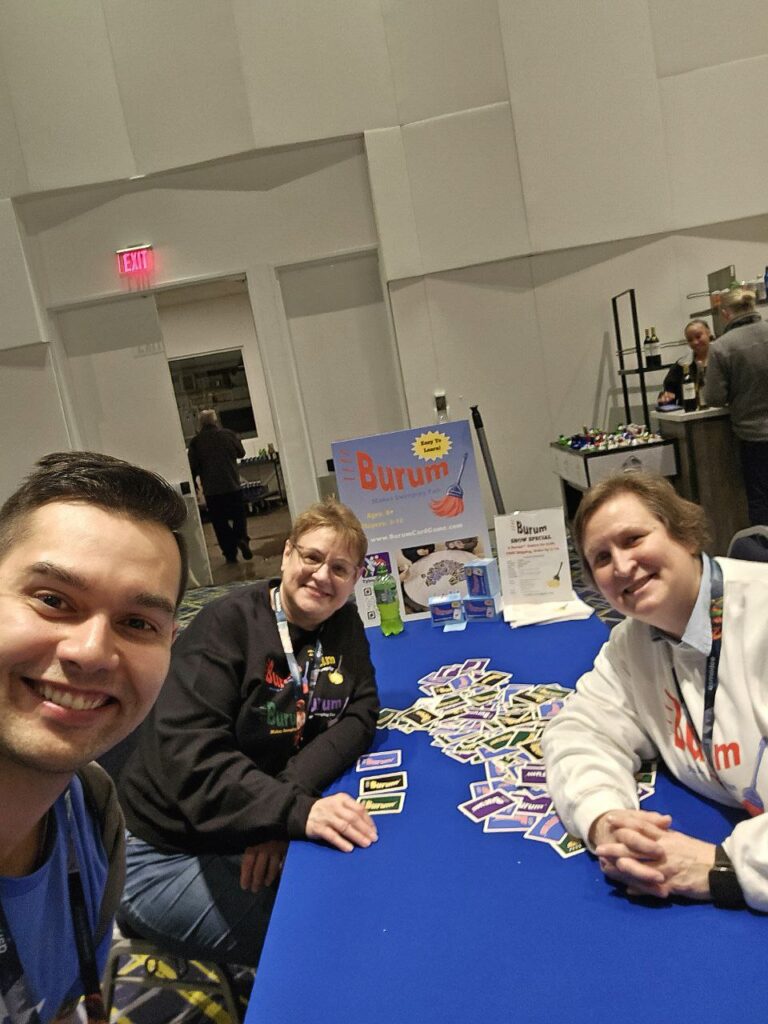
Burum is a three-to-twelve-player card game where the goal is to shed cards as quickly as possible and tally the lowest score. The game is played over a number of rounds equal to the number of players—or until you decide to stop. Players are dealt ten cards along with four face-up and four face-down cards at the start of the round. Once the starting card is revealed, players play as many same cards as possible of equal or lower value.
Once four of a kind are played (whether by one player or several over turns), the pile is “swept” into the discard pile, and the sweeping player starts the next play with any card(s). If a player plays a higher-value card, they can only play one and must pick up the existing pile into their hand. After one player sheds all their cards (including the eight cards in front of them), all remaining players get one last turn to play as many cards as possible. Scores are then tallied based on the sum of leftover cards, and a new round begins.
The deck includes cards numbered one through ten, plus twenty, thirty, forty, and fifty—the fifty also acts as an automatic sweep. The game contains four decks, and the number of decks in play depends on the player count.
A charming game of sweeping and tactical card play.
But how did this little game find its way to GAMA?
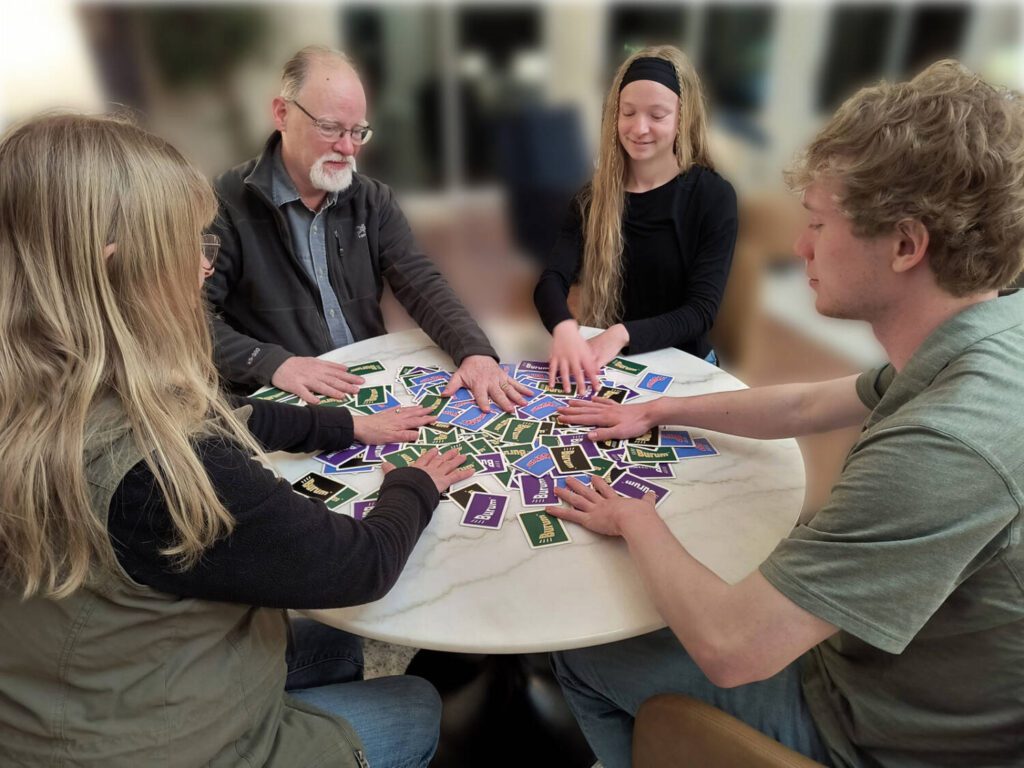
How a Family’s Love for Cards Led to the Creation of Burum
Some of the best games aren’t born in boardrooms—they come from kitchens, campfires, and family gatherings. That’s exactly how the fast-paced, competitive Burum came to life. What started as a fun discovery among friends turned into a passion project for Tricia Miller and her family, eventually evolving into a full-fledged business.
A few years ago, Tricia’s family friends returned from wintering in The Villages, Florida, and introduced them to a card game called Sweep, played with a standard deck of playing cards. The game quickly became a favorite, making its way into family reunions, church youth group gatherings, and even a trip to Mexico, where cousins played it for hours, watching the scoring leads shift back and forth. Tricia’s tennis team also picked it up and loved it so much that they continued playing at end-of-season parties and shared it with their own families.
As more and more people asked for written instructions, Tricia realized that Sweep was practically unknown to most players—and that it might have potential as a published game. Encouraged by her sister, Genie, she set out to bring the game to a wider audience. The project soon became a full family effort, with their brother, Tim, and their parents, Marlene and Jim, all joining in the development process.
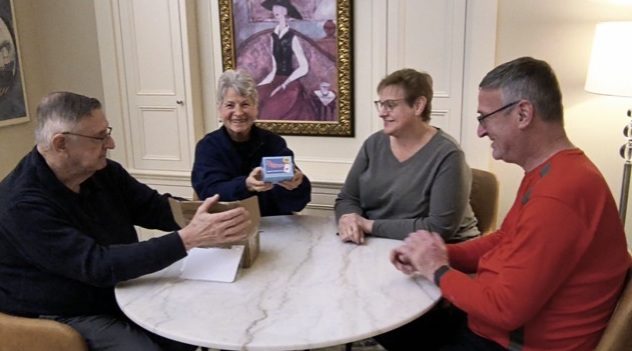
Reinventing the Game
Rather than just repackaging Sweep, the family wanted to make it even better. They designed a custom deck tailored specifically for the game, eliminating common questions about face card values, whether the ace was high or low, and other ambiguities. They also introduced a special Sweep card to enhance gameplay and expanded the deck to support up to twelve players, making it perfect for game nights.
With a personal touch in mind, they selected card and box colors inspired by their high school and college alma maters. The design process was meticulous—countless font styles and sizes were tested before settling on the final look. Instead of traditional face cards, they explored alternatives like bronze, silver, and gold before ultimately opting for a numbered system. To top it off, Genie’s son-in-law illustrated a charming, colorful broom for the Sweep card, giving the game its own unique personality.
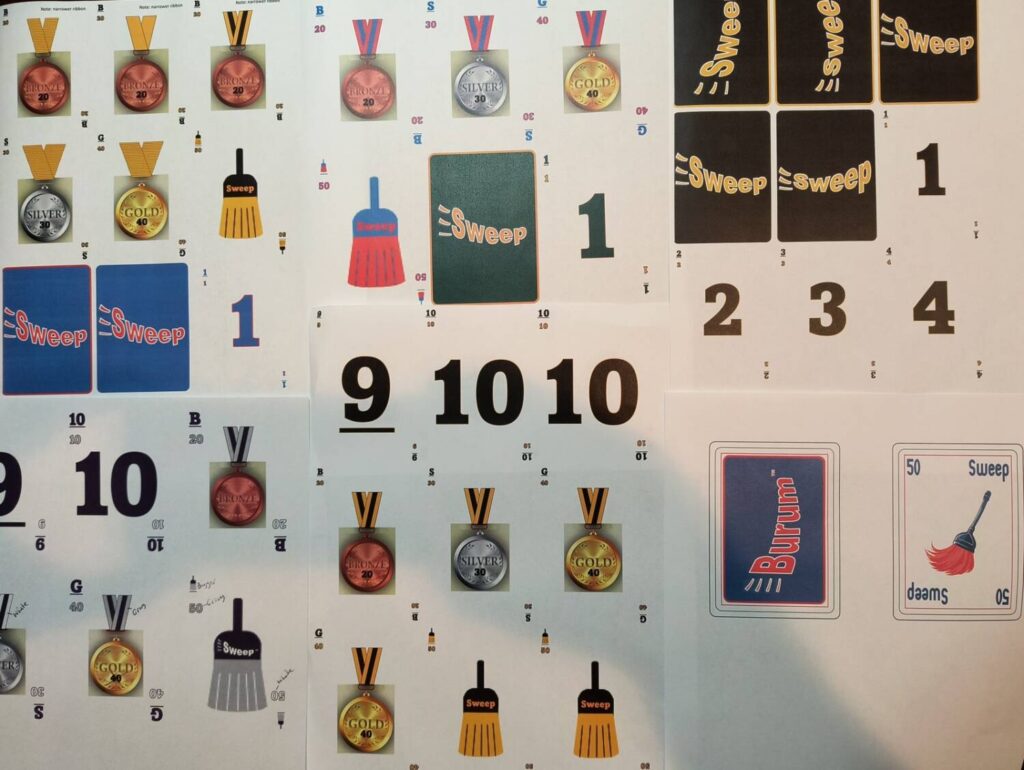
Building a Business Together
What started as casual family discussions soon turned into full-blown business meetings over dinner. With so many voices in the mix, not everyone always agreed—but through open conversation and compromise, they found solutions. The rule sheet was rewritten multiple times, and even the game’s box went through numerous tweaks before they reached a final design.
One of the biggest challenges was finding the perfect name for the game. Wanting something distinctive, the family translated “sweep” into over 200 languages, finally landing on Burum—a word from the Marshallese language that means sweep and happens to sound like broom. It was a perfect fit, capturing both the essence of the game and a playful connection to its mechanics.
Naming the company behind Burum proved just as tricky. After cycling through ideas like 5M Games and 5th Season Games, Tricia’s passion for genealogy led them to choose Tylee Tisdale, honoring their great-great-grandparents. The name reflects a piece of family history, recognizing ancestors whose names might have otherwise been lost through generations.
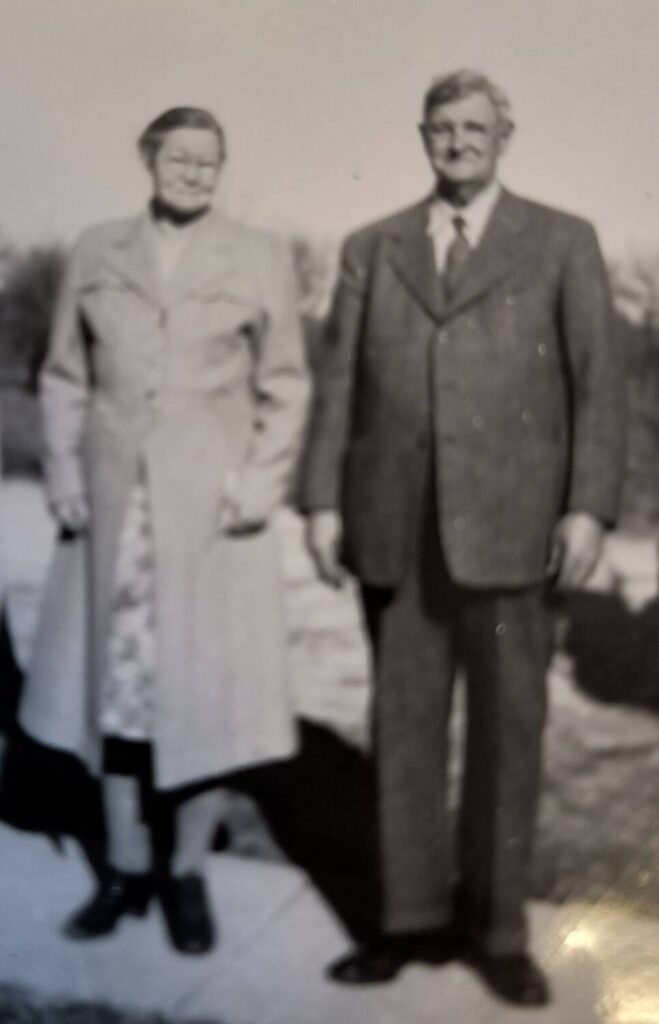
From Idea to Market
While Burum marks their first venture into game publishing, Tricia brings extensive business experience to the table. As the owner of Eden Bath, a company that distributes high-end sinks and home products to major retailers like Wayfair, Home Depot, and Walmart, she already had the logistics and distribution knowledge to bring Burum to market. By leveraging Eden Bath’s supply chain expertise, Burum quickly went from concept to production.
Now available for purchase, Burum has already started making waves in the board game industry. Retailers and distributors have begun signing on, and the family continues to spread the word through conventions, influencer outreach, and even a feature on WMT news radio.
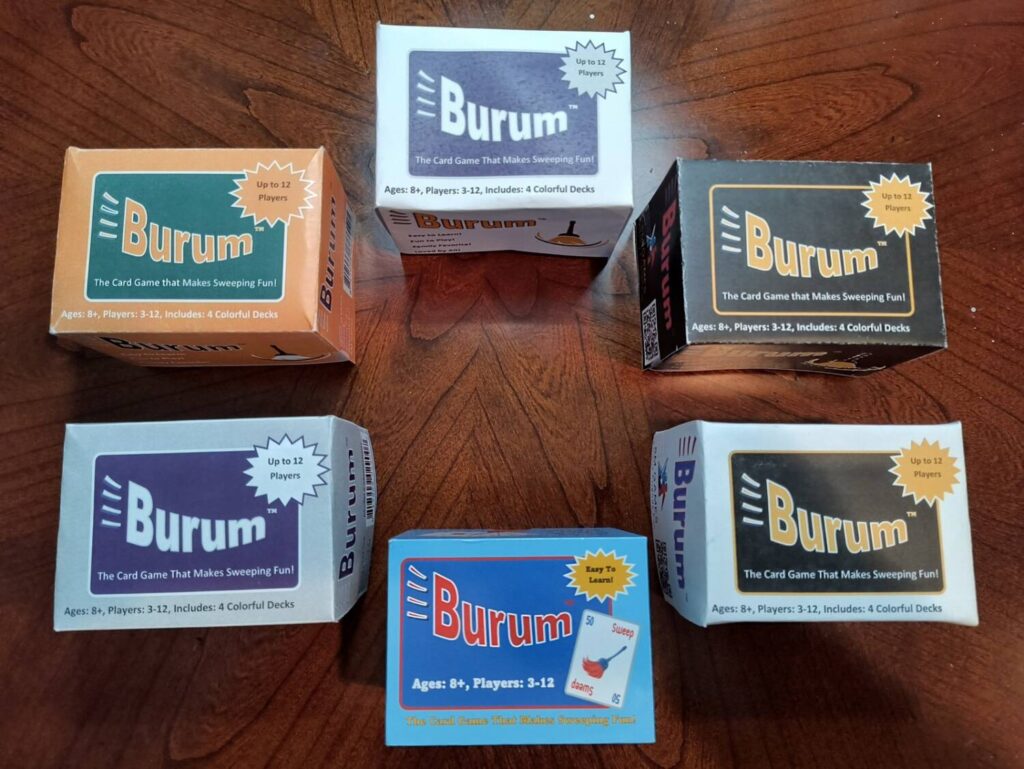
Sweeping Satisfaction
Putting aside the amazing origin story, Burum is a fun game. I’ve had the pleasure of introducing it to friends, family, and even people at other gaming conventions. Everyone who has played immediately starts discussing different strategies and approaches. The gameplay feels very refined, as every decision is important. Play low cards too early, and you might get stuck picking up piles often in the late rounds. Play low cards too late, and you might fall behind, scoring a lot of cards. The tactical gameplay is further enhanced by the semi-open information about other players’ cards. The game also introduces a fun push-your-luck element when deciding whether to play from the unknown, facedown cards. It’s a necessary risk, as all cards need to be cleared. Scoring becomes interesting over multiple rounds, as players can go from scoring a hundred points in one round to shedding all their cards in the following round (scoring zero). I’ve never experienced a game with a runaway leader, and that feels just right.
To me, Burum is a parlor game that is easy to teach, familiar enough to appeal to a wide audience, and tactical enough to draw in even the most seasoned hobby gamers. Add in the fact that the box is small and versatile, and it’s a home run. I love the color scheme and the meaning behind the colors. One player even mentioned that the shading gave a nostalgic 90s aesthetic. Though the cards are just colored numbers, the discussion about adding a theme came up a couple of times. Would it distract from the simplicity? Maybe, but that’s for the future to decide.
Stories like these are common in the gaming industry. Every game begins as a spark of inspiration—an idea fueled by passion, creativity, and often, a deep love for the hobby. Many designers kick off their careers with small, personal projects like Burum, testing the waters and learning the ropes as they go. There’s something uniquely inviting about tabletop games; the approachability and accessibility of the medium make it possible for passionate individuals to turn their dreams into something tangible.
Unlike other forms of media, where high barriers to entry can stifle new voices, the board game world remains fertile ground for innovation and experimentation. Events like GAMA serve as gathering places for creators, publishers, and enthusiasts to connect, collaborate, and breathe life into new ideas. These spaces are where friendships form, ideas evolve, and projects take their first real steps toward becoming something playable, publishable, and shareable with the world.

When you see a game on a shelf, it’s easy to overlook the journey behind it. But every box holds a story—a process shaped by trial and error, small victories, and inevitable setbacks. And at the heart of it all is passion: the invisible thread that ties the whole journey together.
At its core, Burum is more than just a card game—it’s a testament to family, tradition, and the joy of shared experiences. What started as a simple pastime among friends has transformed into a game designed to bring people together, just as it did for the Miller family. With passion, creativity, and a little bit of competitive spirit, they’ve turned a beloved game into a product they hope will become a staple at game nights everywhere.
And for them, that’s a sweep worth celebrating.

Photos courtesy of Tylee Tisdale, LLC


